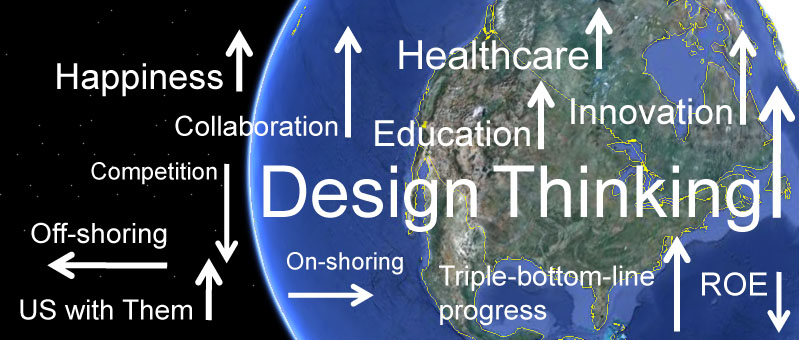
Co-written by Dr. William Ross Morrow
Apple has awakened corporate America to the strategic value of design. In the wake of decades of U.S. manufacturing and engineering commoditization and off-shoring, however, it is natural to expect design to be the next competency to migrate abroad. The U.S. cannot simply "on-shore" its lost manufacturing base to retain a position of economic health. We must ask how the U.S. can continue to excel in design, while integrating design further upstream in the business cycle?
Is the strength of U.S. business due, in large part, to excellence in the design of innovative products and services? And how important is "design" to the health of the economy as a whole? These questions were the subject of a multidisciplinary panel discussion at a recent National Science Foundation (NSF) conference held in Boston on July 9th -- July 11th. This panel examined the creative profession's assumptions and explored the future opportunities for design research and education. In conjunction with the conference debate, we also invited the online creative community and design experts to share their thoughts and ideas on "Design's Role in the U.S. Economy." While the U.S. design community's current mental models of competition create opportunities for innovative change, they may also be holding them back from innovative partnerships with perceived rivals. What remains unexplored about U.S. culture and methods that might assist in moving U.S. design forward?
On culture -- Economic growth, not triple-bottom-line progress, is the mantra of Western culture. Western economies rest on the paradigm of increasing material productivity while often failing to ask if this focus actually makes society any happier. American politicians, business, and educators, in particular, still want to be the biggest and best, fueling an "us against them" competitive view of the world. The perspective of a "zero-sum game" is slowly changing, driven by recent business research focus on innovations at the "bottom of the pyramid" and interest in "appropriate technology" in both engineering and design.
On design methods -- There remains little consensus into the "best" way to undertake design. Nonetheless, there seems to be an agreement among design researchers that "Design Thinking" will be an enabler of progress in business, education and health care. Design thinking -- the process of identifying needs, doing ideation, prototyping, selecting, implementing and learning -- offers a comprehensive framing of opportunities by uncovering stakeholders' mental models, behaviors, and aligning their interests with effective, practical solutions.
Practicing designers and other creative professionals are very interested in business issues. Examining the dissemination of articles through social media show creative professionals mainly sharing articles on the topic of business and design processes. However, multiple crowdsourcing challenges, conducted over the past year, show that creative professionals seem to be fixed on the business issues not understanding and appreciating design debate, while contributing few new ideas to resolve the challenge. Creative professionals are most comfortable when adding on to traditional design knowledge and exploring how design can address various social challenges such as violence, poverty or animal rescue.
The business, engineering, and creative professional of the future need to be proficient in design thinking. Thus, to continue to excel in design, U.S. business and product development experts should begin to collaborate with design science research and education emerging in major U.S. universities. This collaboration must identify, through rigorous experimentation, what design strategies work in which contexts, and how to best educate both current and future professionals to confront each challenge from the design perspective.
Special thanks to Dr. William Ross Morrow for researching and co-writing this article